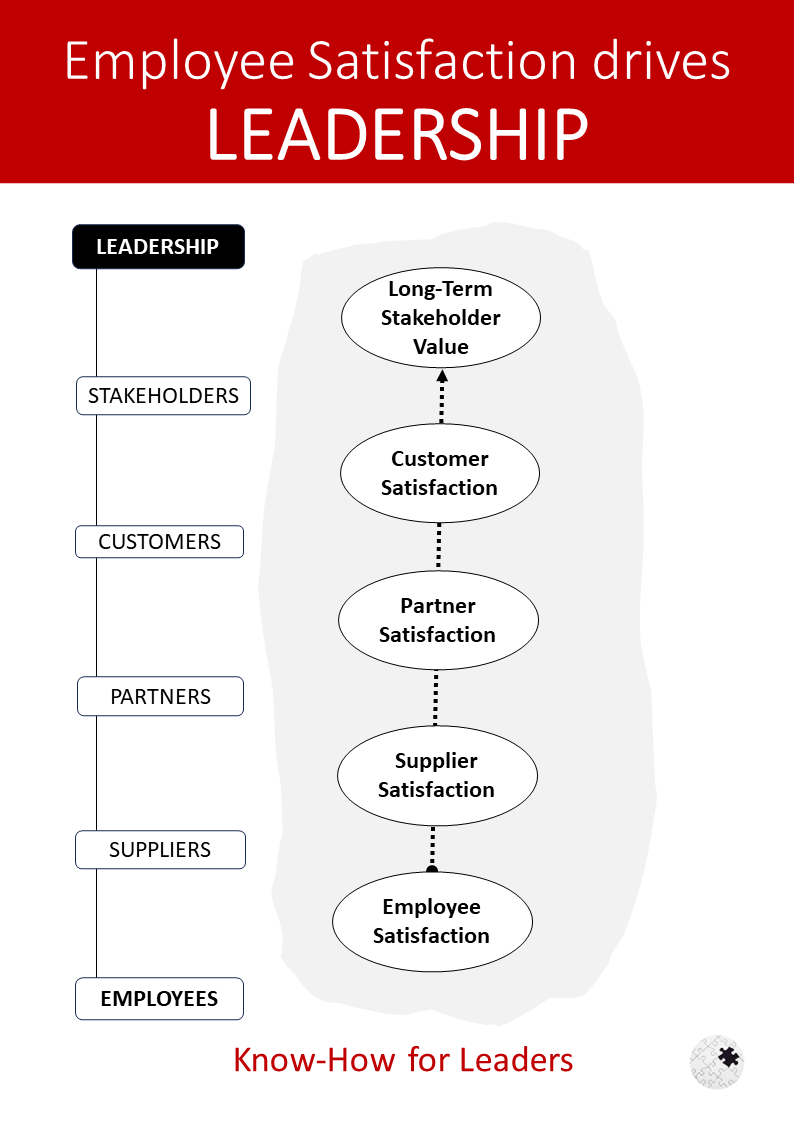Employee satisfaction is a crucial element that drives leadership and significantly contributes to the overall success of an organisation. It is a well-established fact that satisfied employees are more productive, innovative, and loyal. They are more likely to go the extra mile, contribute their best work, and stay with the company for a longer period.
In essence, employee satisfaction is the key driver for establishing long-term stakeholder value. Stakeholders in this context include suppliers, partners, customers, and even potential investors. Let’s delve into how employee satisfaction drives value for these stakeholders.
Firstly, let’s consider suppliers. Suppliers are an integral part of any business operation. They provide the necessary goods or services that enable a company to deliver its own products or services. When employees are satisfied and engaged in their work, they are more likely to build strong relationships with suppliers. This can lead to better negotiation outcomes, improved quality of goods or services received, and faster response times in case of issues or emergencies. In turn, this can enhance the overall efficiency and effectiveness of the business operations.
Secondly, partners also benefit from employee satisfaction. Partnerships are often based on mutual trust and cooperation. Satisfied employees are more likely to foster such relationships as they tend to be more committed and dedicated to their work. They can effectively communicate the company’s vision and goals to partners, leading to better alignment of strategies and objectives. This can result in more successful collaborations and partnerships.
Thirdly, employee satisfaction directly impacts customer satisfaction. Happy employees create happy customers – this is not just a catchy phrase but a reality in today’s competitive business environment. Satisfied employees are more likely to provide excellent customer service as they take pride in their work and their company. They can empathise with customers’ needs and go above and beyond to meet those needs. This leads to higher customer satisfaction levels, which can translate into increased customer loyalty and repeat business.
In conclusion, employee satisfaction is not just about creating a positive work environment for employees. It is a strategic tool that can drive leadership and create long-term value for all stakeholders. Therefore, organisations should invest in initiatives that enhance employee satisfaction. These could include providing competitive compensation and benefits, offering opportunities for learning and development, recognising and rewarding good performance, promoting work-life balance, and fostering a culture of respect and inclusivity. By doing so, they can boost employee satisfaction levels, which in turn can drive leadership and create long-term stakeholder value.




